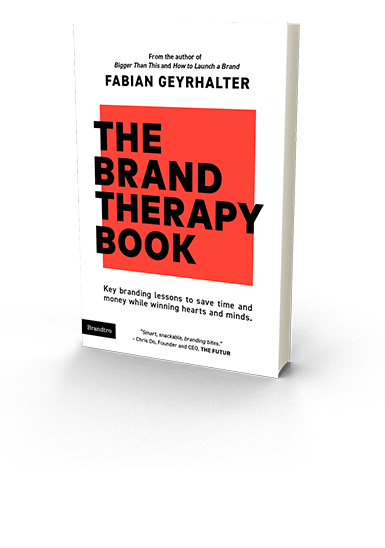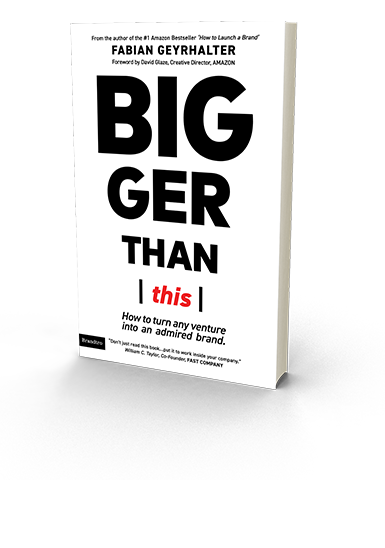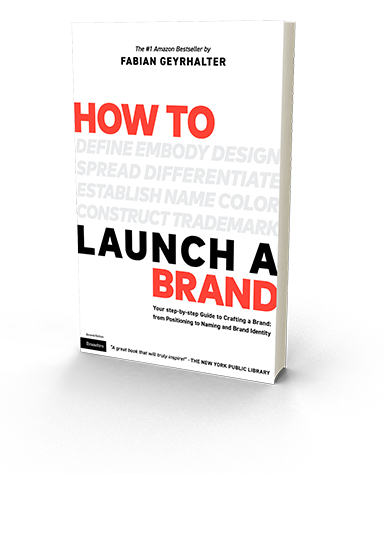Tag Archives: brand architecture
How The Narcissism of Prince Can Lead to Your (Next) Successful Brand Launch
I spend a fairly good amount of my professional life traveling the world for meetings, workshops, and lectures. My wife pities me for the early mornings, late nights, the anxiety, the unknown, the airports and the countless Uber rides. Me, on the flip side, I enjoy it thoroughly. I get to explore new cities and cultures and use the little bit of downtime I get to gain new experiences. I will always be a seeker. Just like a little boy, I am curious and still believe that the world is my oyster. It’s strange, but I firmly believe it works to my advantage as it fuels me with inspiration and, as a result, creates lasting memories.
This week brought me to Minneapolis to work with a Fortune 100 company on two brand launches, and this morning I used the time before my flight to take a ride out to the suburbs for a tour of Paisley Park. Not one of the city’s many beautiful parks, Paisley Park is the place Prince (‘The artist formerly known as,’ who passed away abruptly last April) created in order to write, record, party, host, meet and at times stay at, that is crafted precisely to only his needs and according to only his vision. I am not a ‘super fan’ by any means, but an admirer of his talent and felt like a visit to this ‘sacred’ place would make for a unique experience. And it sure did.
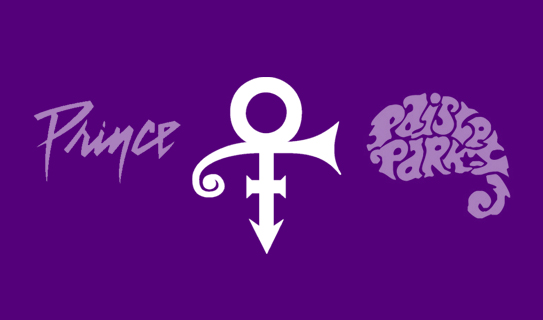
The ‘Prince,’ ‘Love Symbol #2,’ and ‘Paisley Park’ logos are all part of the Prince brand (owned by their respective trademark owners, shown for illustrative purposes only).
Besides being an amazing musician, dancer, singer and overall creative artist, Prince was also an overachiever, a perfectionist, and a narcissist. He was an entrepreneur extraordinaire and a meticulous brand creator.
At the end of an amazing tour through his digs – he dubbed it Paisley for the ever changing nature of paisley design patterns, a metaphor for his creativity, and Park for it being his playground – I left feeling equally moved and inspired. When on premise, Prince was found recording new material more often than doing anything else. Many nights of the week he had gatherings, many were free to attend for the ones ‘in the know.’ Some he unexpectedly popped in to perform a quick impromptu jam session for the few lucky people in attendance. Some were 3-plus hour long sets for 2,000 attendees in a full stadium-gig setting (Yes, this ‘park,’ his house, is ginormous). Most started between 1:00 and 2:00 AM. One night when he serenaded Madonna, who was in town for a tour stop, there were only 8 people in attendance. As our tour guide, Shawn, said, “I guess people have day jobs and 2:00 AM shows don’t fit too well into that routine.”
Prince’s recording studio was centered around a mike and a chair. He sat while singing because most of the times he was operating everything else all by himself, simultaneously. Guitar, piano, synths, you name it. When he walked into the entrance hall of Paisley Park, his eyes were looking down upon him from the ceiling in the form of a big painting.
He also created a room for each of his finished albums. There are, obviously, quite a lot of these rooms. Like shrines, these rooms are filled with video footage of concerts and interviews of that era, costumes he wore during that tour, specific instruments played, artwork for the album and tour, and walls covered floor to ceiling with images of him during that era. These rooms were not created for the museum, they were part of his living life. He walked by them every day he spent at Paisley Park.
You can only imagine the significance he saw in each project and the pressure he (not even thinking about the fans, critics, and record labels) put upon himself with any new project, knowing that ‘at its conclusion I will designate a room to it, which shall outlive me once this turns into a museum.’ The kind of attention to every project detail had to be meticulous: From concept, compositions, lyrics, artwork, theme, costumes, performance, production, band, dance moves to PR, the list goes on and on.
At the onset of your next new project, and may it be the first – your startup perhaps, envision that room Prince dedicated to each of his projects and ask yourself how the room for your project should look two years after successful launch:
-
Is it deserving of ‘a room’?
If not, how can you make it more deserving?
-
Will it be loved and admired by the ones you cater to?
If not, how can you create more empathy?
-
What is the unique experience?
If it lacks, go back to map the customer journey and create enough delight and ‘moments of memories’ along the way.
-
How does it fit into the house (of your brand, or brands, if applicable)?
If it doesn’t, maybe that is a pivot or a step into a new era, but ensure you can see past this step to plan for consistent growth and a unified future brand experience.
-
What lasting impact will it have?
Is that the impact you seek – is it impactful enough?
-
Does it push the company forward enough? Or in the case of a startup, does it push you towards your ‘true north’ vision for the brand?
If not, experiment more to push your industry’s boundaries.
You don’t have to be an obsessive, genius rock star in order to do that. Nor a narcissist. You just have to have enough foresight to envision, in order to connect, the dots. But you have to list out all those potential dots, and envisioning that room is one great way of doing so.
How will it look? Are you impressed?
Once you are, perhaps you should throw a brand release party – sounds so much better than a launch party now doesn’t it?
Applause will be a given, encores optional.
Suggested Tweet
Talk Talk – Talk Talk (Sound Naming Advice)
Do you remember this song? Talk Talk by the highly influential 80’s band Talk Talk?
That’s right, you do. It was rather memorable. Lucky for them, as they named their first song on their first album (their second single release) after their newly formed band.
That takes real guts.
And guts can result in glory…or defeat. Brutal defeat that is. A risk that many new ventures are willing to take when they name their product the same as their company, or vice versa. It is a move that most often is based on a swift launch. Rarely is the decision to name an offering and its company alike a choice of strategic nature.
When Talk Talk decided to choose Talk Talk for their ‘inaugural song’, there was a risk involved in case the song sucked, but the band had a decent amount of control over that. The song did not suck, instead it defined a sound that they built their entire career on. You hear Talk Talk (Company Name) and you automatically hear the song Talk Talk (Product Name) in your ears. Smart move.
In the entrepreneurial world though, betting on your one product to turn into a hit is a gamble that only gets amplified once you decide to diversify your portfolio of offerings down the road. Levi’s had a major hit with their jeans, then they tried selling khakis and failed doing so under their brand name; they had to create Dockers.
Here’s to you, Talk Talk, for tempting entrepreneurs to take this risk. For the ones that aspire to lead through brand strategy though, you may peruse our white paper on brand architecture instead (while listening to any 80’s hit of your choosing).
Lure With Candy, But Sell Meat & Potatoes: Brand Strategy For Brands Built On Trends
How to outlast Trends?
Turn a Want into a Need. A Need is usually not temporary, a Want often is.

If as an entrepreneur you uncover a trend to tap into, it can be done in a short-term, unsustainable, yet highly profitable manner: Start shop quickly, gain momentum fast, maximize sales and dissolve immediately upon peak. Done deal. You did not build a brand, but sold a trendy product or service that has run its course, but in a profitable manner.
If you are in it for the long term, despite leading with a trendy product or service, and you want to build an actual brand, ensure to have a long term brand strategy formulated. It does not even need to have a direct relation to the trend, only to the audience and category. Your audience would not know, they are blinded by (and excited to buy into) the trend, but once the trend fades, the audience is yours and you will be ready to tap into them with the next product or service that speaks not to their initial Wants, but this time to their Needs. You planned for that to happen. The consumer already likes your offering, and if the trend faded, but you have another product ready to sell that fits their needs, they will make the purchase based on the trust your brand has established. You successfully created a trendy product and turned it into a sustainable brand. With this strategy you tap into a momentary want (a trend) yet allowing you to keep the same consumer for their ongoing needs.
If you are destined to dive into the risky business of building a brand based on a single trend, make sure to lead with the candy row for their wants, but then build the rest of the store to sell them the meat and potatoes they actually need.
The Number One Most Important Branding Exercise: Don’t Think Of Your Audience, Think Like Them
Imagine you own a well established, sophisticated Mexican restaurant in a wealthy neighborhood that is frequented by out-of-towners as much as by locals and has been receiving rave reviews for years. You made a good living and decide to buy the Irish pub a few doors down the street, on the same block.
So far so good.
Your logical next move is to announce to your customers that you now run another great establishment, serving different cuisine and drinks, same quality, same owner, just a few doors down. Have a pint after your dinner!
And this is where a perfectly logical move is costing you customers instead of gaining them, because you thought of your customers instead of like them.
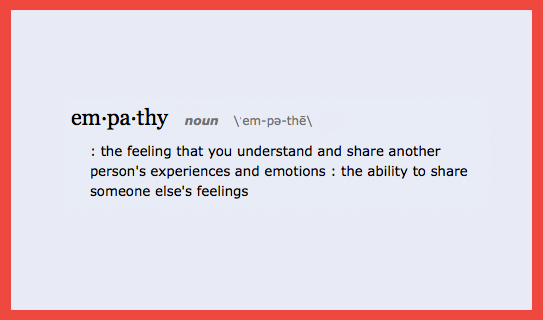
This is not a fictional story. I was reminded of that anecdote when I talked with a client last week about how he must hone in on his target audience and focus on a singular message that speaks to his specific offerings and their specific needs. Sounds so simple, but as you can see, it is not. The temptation to reach out to your customers, or to widen your offering or your clientele, often leaves the most important part of branding left behind: Empathy.
Don’t think of your customer, think like them. If you would, you would never dilute your established authentic Mexican restaurant brand (which is about an authentic and cultural food experience) with Irish pub chatter (which is about pints in quantity rather than quality). While dining at said restaurant, I saw a tabletop advertising their ‘other’ completely unrelated venture and it turned me off in an instant. So much so that I started coming in only once every month instead of once a week. If the owner would have thought about why people loved her restaurant, she would have ensured to separate the two businesses (A Brand Architecture exercise would have made that crystal clear), their respective audience and outreach.
This particular venture experienced organic growth, and that often leads to brand disasters. Thinking like your customer is the single most important thing you can do as an entrepreneur while establishing your brand, and the one that entrepreneurs tend to be doing the least. Next time you communicate on behalf of your brand, ask yourself: Is the whole enchilada worth the pint?

